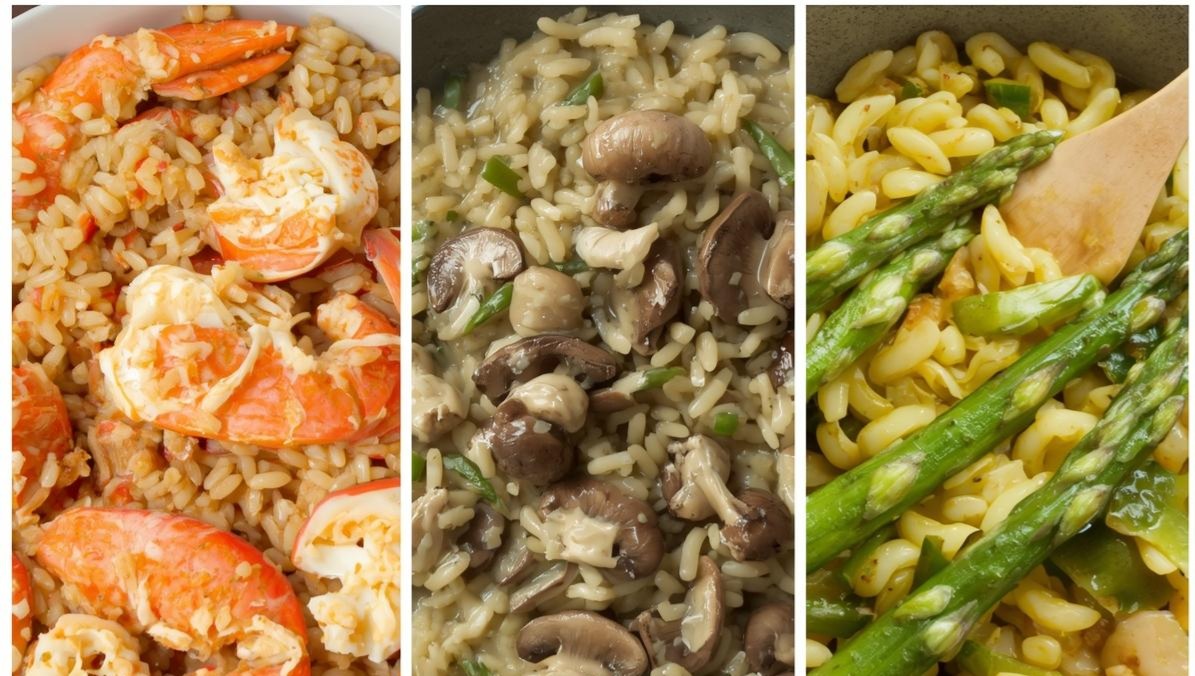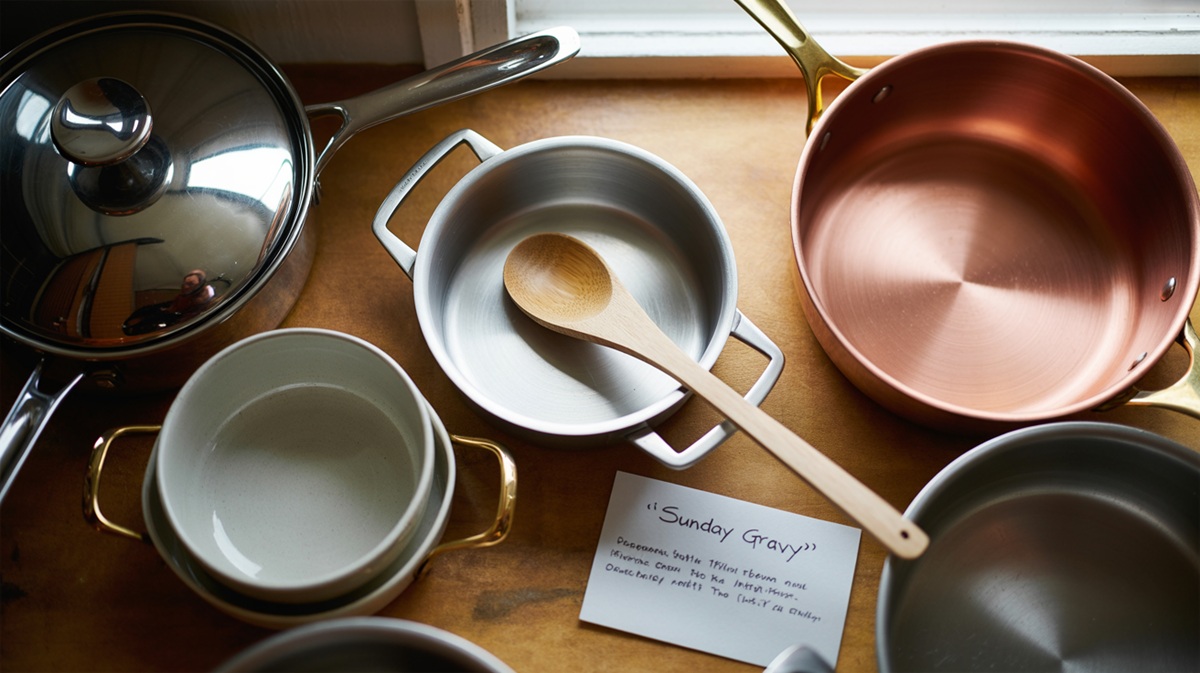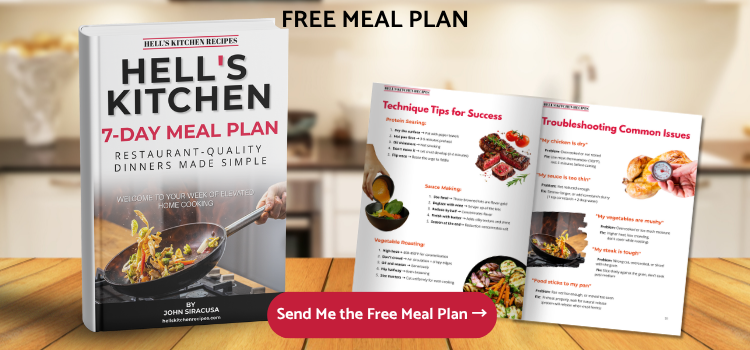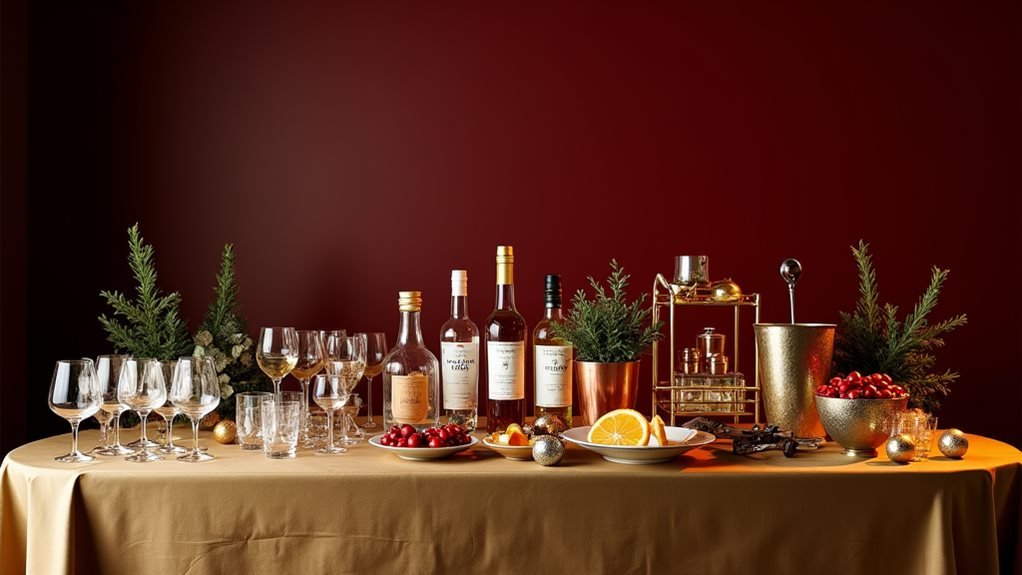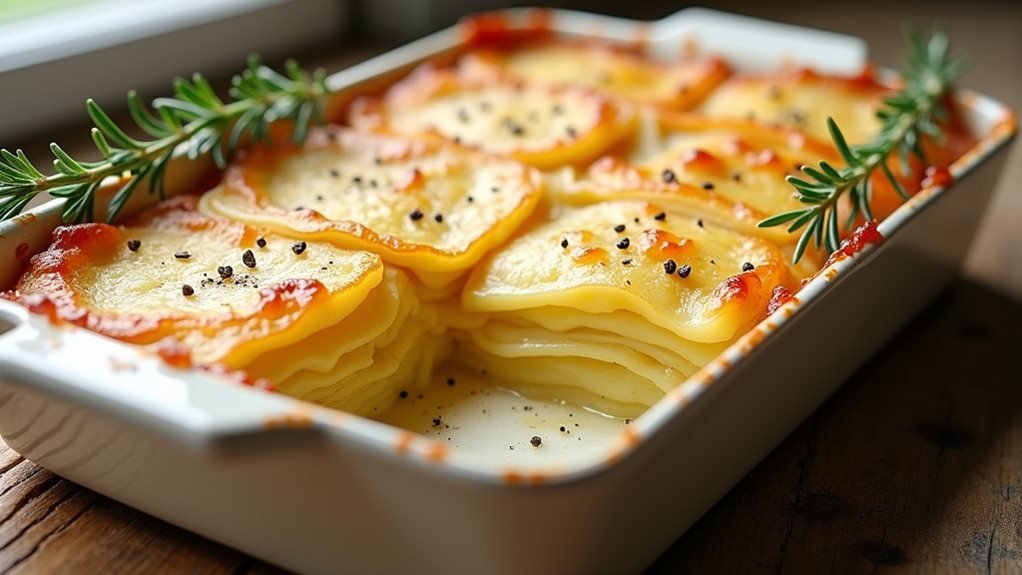The Restaurant Secret: Pre-Cooked (Blanched) Risotto
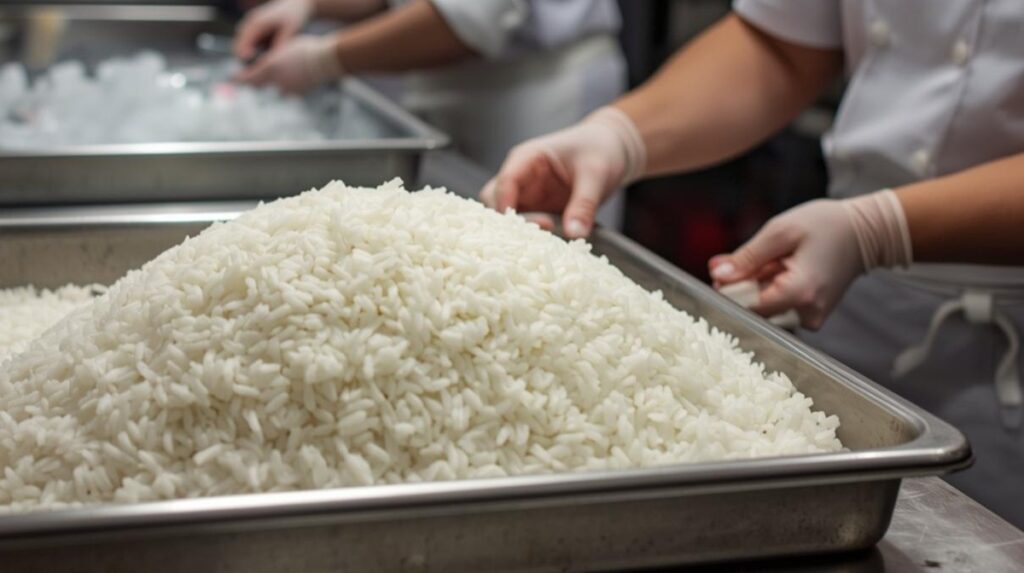
Restaurants don’t start with raw rice for each ticket. Instead, they:
- Boil arborio rice briefly (about 9 minutes) to start hydration.
- Stop the process in an ice bath.
- Drain well and chill in shallow pans.
- Finish fast with hot stock, wine, and aromatics when an order arrives.
This workflow reduces finishing time to approximately 3–5 minutes while maintaining a supple, creamy texture.
For first-hand insights from chefs and food enthusiasts, see this Reddit discussion on risotto in Hell’s Kitchen.
The Science Behind Blanched Risotto

Arborio is rich in the starches amylose and amylopectin. Traditional stirring nudges them out slowly to create a body. Blanching does part of that work in advance:
- Partial hydration sets the stage for quick finishing.
- Controlled starch release builds creaminess without breaking the grain.
- Rapid chilling prevents carryover heat from causing the rice to overcook, thereby preventing it from reaching the al dente stage.
For a clear visual breakdown, watch this YouTube demonstration of risotto technique.
Equipment That Makes the Method Smooth
In pro kitchens, you’ll see stockpots, ice baths, fine-mesh strainers, sheet pans, and heavy sauté pans. At home, you’ll need a large pot, a bowl of ice water, a colander, a rimmed sheet pan, and a wide skillet.
The Blanching Process Explained
- Boil rice in well-salted water until the center is still firm.
- Transfer to an ice bath to immediately halt the cooking process.
- Drain thoroughly; spread on a tray to cool and dry.
- Refrigerate in a shallow container until you’re ready to finish.
Finishing Risotto Like a Pro
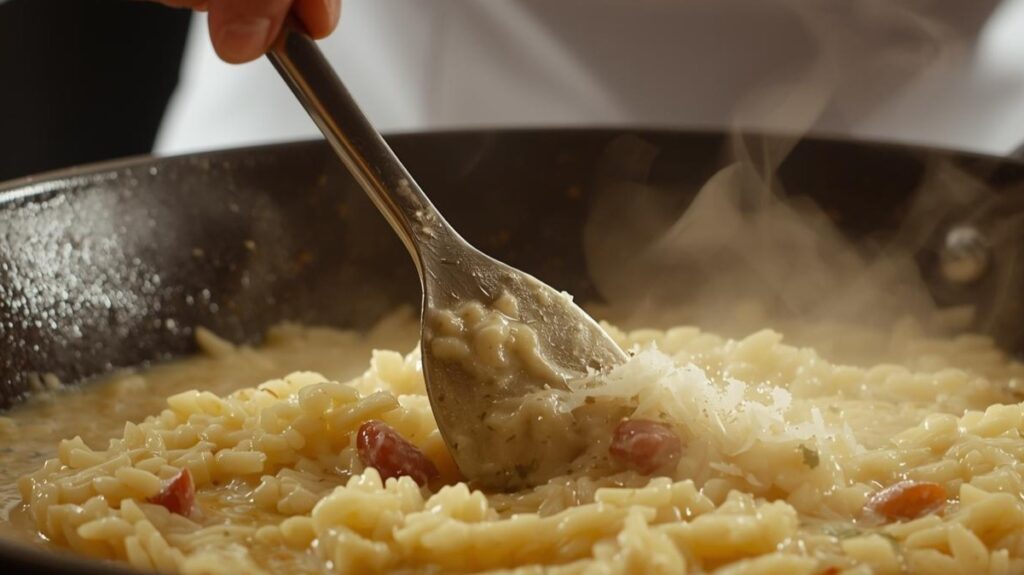
The finish is short and focused:
- Sweat shallots and garlic.
- Stir in the blanched rice, then add the wine and reduce the heat to medium-low.
- Add hot stock gradually, stirring to develop body.
- Mount with butter, mascarpone, or Parmesan; adjust the salt and acidity as needed.
Want to see Ramsay’s spin? Try his Lobster Risotto Recipe.
Gordon Ramsay-Style Elements That Raise the Bar
- Stocks with depth: lobster, mushroom, or rich chicken.
- Temperature control: stock stays hot for consistent absorption.
- Contrast: blistered tomatoes, seared seafood, or herbs for lift.
- Finish with cold butter, mascarpone, or high-quality olive oil.
Discover variations: Mushroom Risotto or Shrimp and Scallop Risotto.
Common Pitfalls (and How to Avoid Them)
- Over-blanching: stop while the center is still firm.
- Skipping the ice bath: residual heat turns grains pasty.
- Poor draining: trapped water washes out flavor.
- Cold stock: slows absorption and muddies texture.
- Overcrowding the pan: limits evaporation; work in reasonable batches.
Adapting the Method for Home Cooking
- Blanch a day or two ahead for quick weeknight service.
- Batch size: prepare only what you’ll use within 48 hours.
- Flavor bases: mushroom, seafood, spring vegetables, roasted squash.
- Practice the finish to dial in your preferred doneness.
For springtime, try Creamy Asparagus Risotto.
Beyond Basic Risotto: Creative Uses
- Seafood risotto finished with seared scallops or shrimp.
- Seasonal vegetables are stirred in at the end for color and texture.
- Arancini or crisp risotto cakes are formed from chilled leftovers.
How We Tested This Method
John Siracusa tested par-cooked risotto against traditional batches in a home studio and a professional environment. Trials included Arborio, Carnaroli, and Vialone Nano; blind tastings assessed texture, flavor carry, and timing. The goal: a reliable method with predictable results for home cooks.
FAQs
Can you par-cook risotto a day in advance?
Yes. Store tightly covered in the fridge for up to 2 days; drain well before finishing.
What rice works best?
Arborio is common, while Carnaroli and Vialone Nano deliver excellent texture and hold.
Does Gordon Ramsay always serve lobster risotto?
Lobster risotto is a recurring dish, but the technique also applies to mushroom, seafood, and vegetable bases.
Why stir if the rice is already blanched?
Gentle stirring during the finish coaxes the remaining starch, creating the signature creamy body.
Final Verdict: Demystifying Hell’s Kitchen Risotto
The speed you see on the show comes from sound prep. Par-cooking positions the rice for a quick, controlled finish that still tastes rich and feels silky. With a little planning, risotto becomes a realistic option for a weeknight meal.
